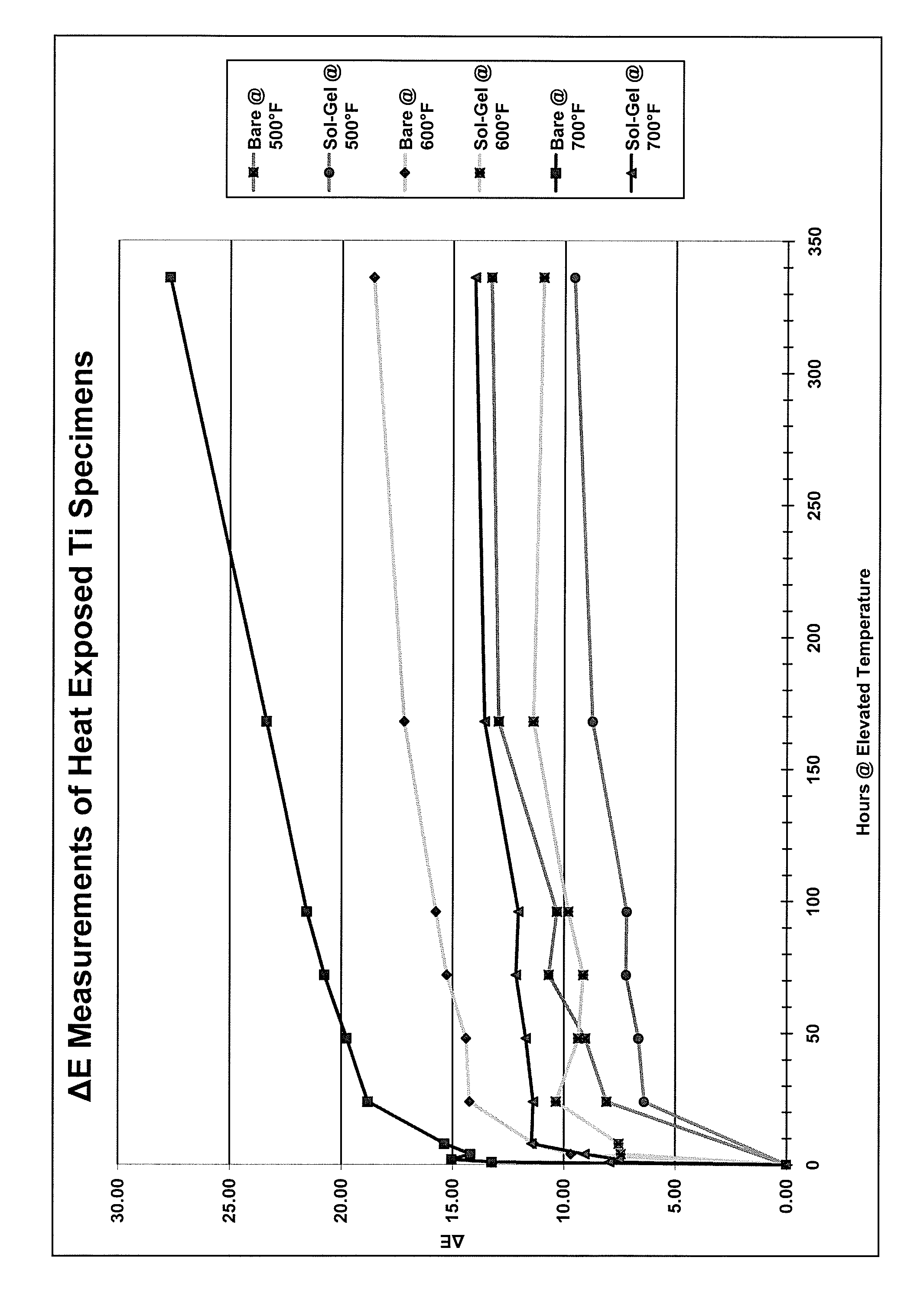Sol-gel coating method and composition
- Summary
- Abstract
- Description
- Claims
- Application Information
AI Technical Summary
Benefits of technology
Problems solved by technology
Method used
Image
Examples
example
Example 1
[0031]A sol-gel coating composition was prepared by providing to a vessel a mixture 11.21 vol % 3-glycidoxypropyltrimethoxysilane, 5.61 vol % zirconium n-propoxide (70% in propanol), 2.52 vol % glacial acetic acid, about 0.56 vol % BL-240 surfactant and a balance of the mixture being 80.10% deionized water. The components were combined and blended in the vessel to provide a blended mixture. The mixture was then sprayed onto a titanium surface and the coating was heated to a temperature of 180° F. for 1.5 hours. The coating formed was highly adherent to the surface and resistant to both oxidation and discoloration at temperature up to about 700° F. Color change, measured in ΔE, was measured on titanium samples treated according to Example 1 and bare titanium samples over time at elevated temperatures of 500° F., 600° F. and 700° F., the results of which are shown in FIG. 1.
example 2
[0032]Example 2 utilized the sol-gel components in the amounts utilized for Example 1, wherein 10% by weight of Ni flake or stainless flake was additionally added to the sol-gel composition. The mixture was then sprayed onto a titanium surface and the coating was heated to a temperature of 180° F. for 1.5 hours. The coating formed was highly adherent to the surface and resistant to both oxidation and discoloration at temperature up to about 700° F.
example 3
[0033]A sol-gel coating composition was prepared by providing to a vessel a mixture 11.21 vol % tetraethylorthosilicate, 5.61 vol % zirconium n-propoxide (70% in propanol), 2.52 vol % glacial acetic acid, about 0.56 vol % BL-240 surfactant and a balance of the mixture being 80.10% deionized water. The components were combined and blended in the vessel to provide a blended mixture. The mixture was then sprayed onto a titanium surface and the coating was heated to a temperature of 180° F. for 1.5 hours. The coating formed was highly adherent to the surface and resistant to both oxidation and discoloration at temperature up to about 700° F.
PUM
| Property | Measurement | Unit |
|---|---|---|
| Fraction | aaaaa | aaaaa |
| Fraction | aaaaa | aaaaa |
| Temperature | aaaaa | aaaaa |
Abstract
Description
Claims
Application Information
 Login to View More
Login to View More - R&D Engineer
- R&D Manager
- IP Professional
- Industry Leading Data Capabilities
- Powerful AI technology
- Patent DNA Extraction
Browse by: Latest US Patents, China's latest patents, Technical Efficacy Thesaurus, Application Domain, Technology Topic, Popular Technical Reports.
© 2024 PatSnap. All rights reserved.Legal|Privacy policy|Modern Slavery Act Transparency Statement|Sitemap|About US| Contact US: help@patsnap.com








